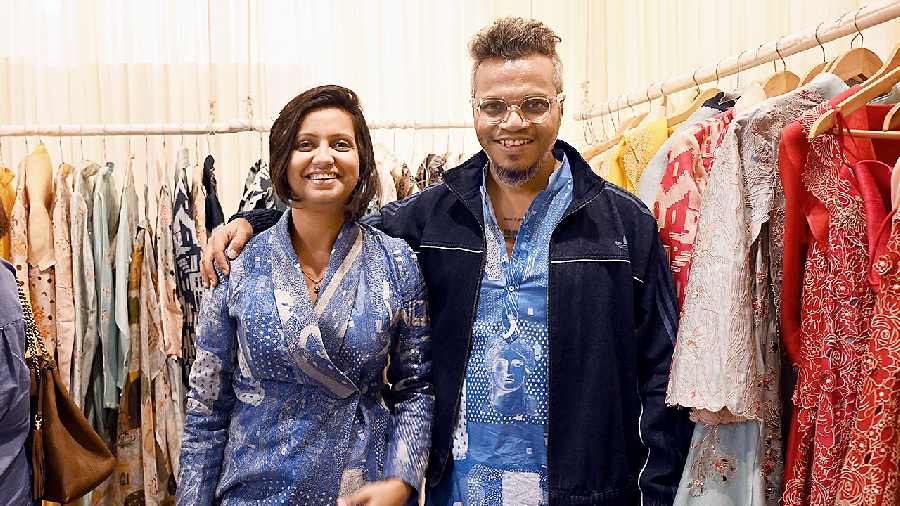Luxury pret label Jajaabor by designers Neelanjan Ghosh and his wife Kanika Sachdev is inspired by their passion for globe-trotting and has already completed five years. The label’s name is inspired by Bhupen Hazarika’s song Ami ek jajabar and from the Assamese word jajaabor, meaning ‘nomad’. The Telegraph caught up with the designer couple, who are nomads at heart, for a chat on their Indian heritage art and Greece-inspired showcase at The India Story’s recent edit.
What did you showcase at TIS this year?
This time we have two collections — ‘Athena’ from our travels to Greece and the Usta art-inspired ‘Wah Usta, Wah’. We went to Bikaner and were doing this shoot in the hotel and we came across this form of art called Usta art. When we asked, we got to know that the Usta artists were invited to India around 800-900 years back and they were designing the forts of India, and now only seven brothers are left and that is the last of their generation. The younger generation doesn’t want to pick up this art. It is a dying form of art.
How did these two collections take shape?
There is a haveli in Bikaner called Bhanwar Niwas, and Sunil Rampuria, an artist and architect, gave this place as a work studio to the artists who are also trying to renovate the haveli. We took inspiration from them.
Greece used to be the cradle of civilisation. There is a past and a present, but in between, there is a lot of turbulence Greece went through and our collection Athena is inspired by that. So, our focus with these two collections has been to create something light and more comfortable. Considering the weather, too, people need to wear clothes that feel good on the skin and are breathable.
Usta art involves a lot of design intricacies. What kind of design detailing went into your collection?
The artists do this beautiful 3D model of these forts in Bikaner which are like wall art and very detailed. First, they create the wooden 3D model and after that, they paint it with all the detailing and the final touch is done with gold. There is a lot of Persian and Rajasthani influence. We have used 3D models for our prints; the floral motifs and stripes are all taken from their paintings on the walls of the Bhanwar Niwas palace. We have used the motifs of the arches and step well. There is a strong Persian influence and the hems are all cutwork-finished.
You are working with the history and culture of different places. How are you contemporising it and making it wearable?
We are working with different silhouettes from jackets to lehngas and even trench coats. We were figuring out a way to do jackets. We figured out a way where we can use a fabric like chanderi, which is really light but gives the structured look so that it can be worn as a jacket. People think trench is for wearing during winter but we are giving it a light body for wearing during all seasons.
We never understood the concept of Indian wear, Indowestern and fusion. The design is all about Indian heritage and culture. You can wear it any way. We don’t believe in those tags. You can wear sneakers with our lehngas. Fashion has to be global. You can wear our clothes in Delhi or in Rome.
